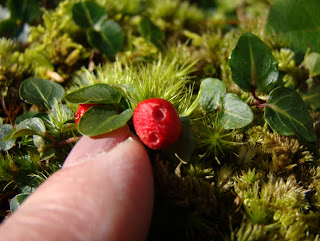Last weekend this group of young men had an unusual find in the Secrest Aboretum. A December White-eyed Vireo! Vireos are insect eaters and the pickings are mighty slim by this time of year. All of its relatives have long gone south; this little slow-poke is an amazing find!
White-eyed Vireo on a Christmas Bird Count
In fact, it was significant enough Roger Troutman ( our count compiler) wanted a photo to document the little birdie. Since the Amish don't take photographs, Ryan Steiner and I were asked to show up with our cameras at the arboretum. Now this photo won't make it into National Geographic (or anywhere else for that matter) but it is diagnostic. The boys got their bird, and I was happy to help the young men out.
If you would like to know more about the Amish or even a bit about our birding experiences, Amish Values for your Family is a nifty book written by my friend, Susan Woods Fisher. Several chapters have back stories about birding with the Amish. Local birder, Bruce Glick is quoted regarding the Holmes County CBC.
One of the keys to success" Bruce writes, "is the encouragement of young birders. These youngsters can tag-along, gradually learning the birds, and eventually becoming leaders themselves. On the most recent Millersburg Christmas Bird Count were 113 participants, of which thirty were eighteen or younger. Many of these young folks are amazingly good birders already, having learned from older siblings, friends, and parents."
Tommorow is my last CBC for this year and we will likely get to see many fine young Amish birders in action once again. Wish us luck- and good weather!
Quote from Suzanne's book was with "Permission Granted by Revell Books"


















































